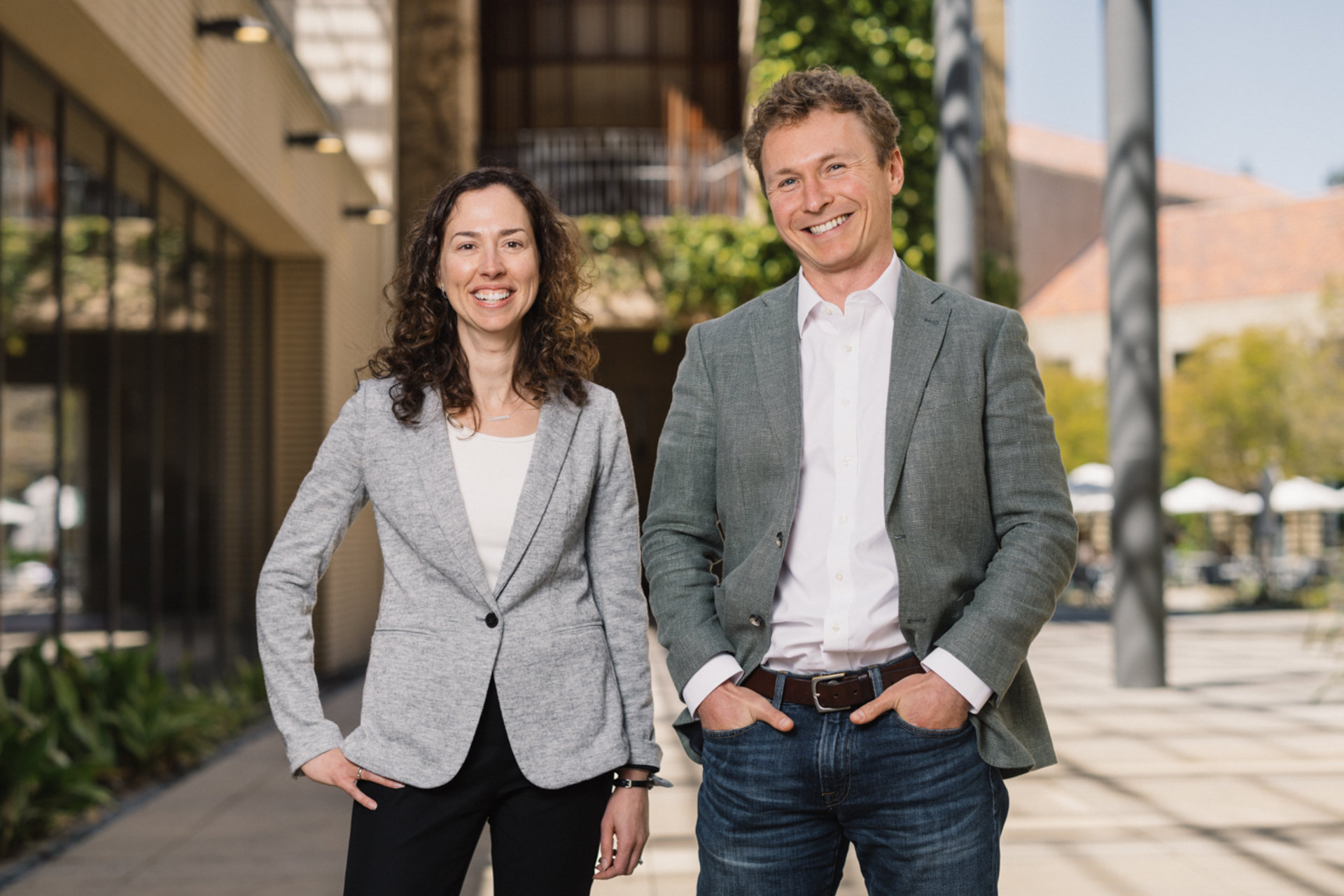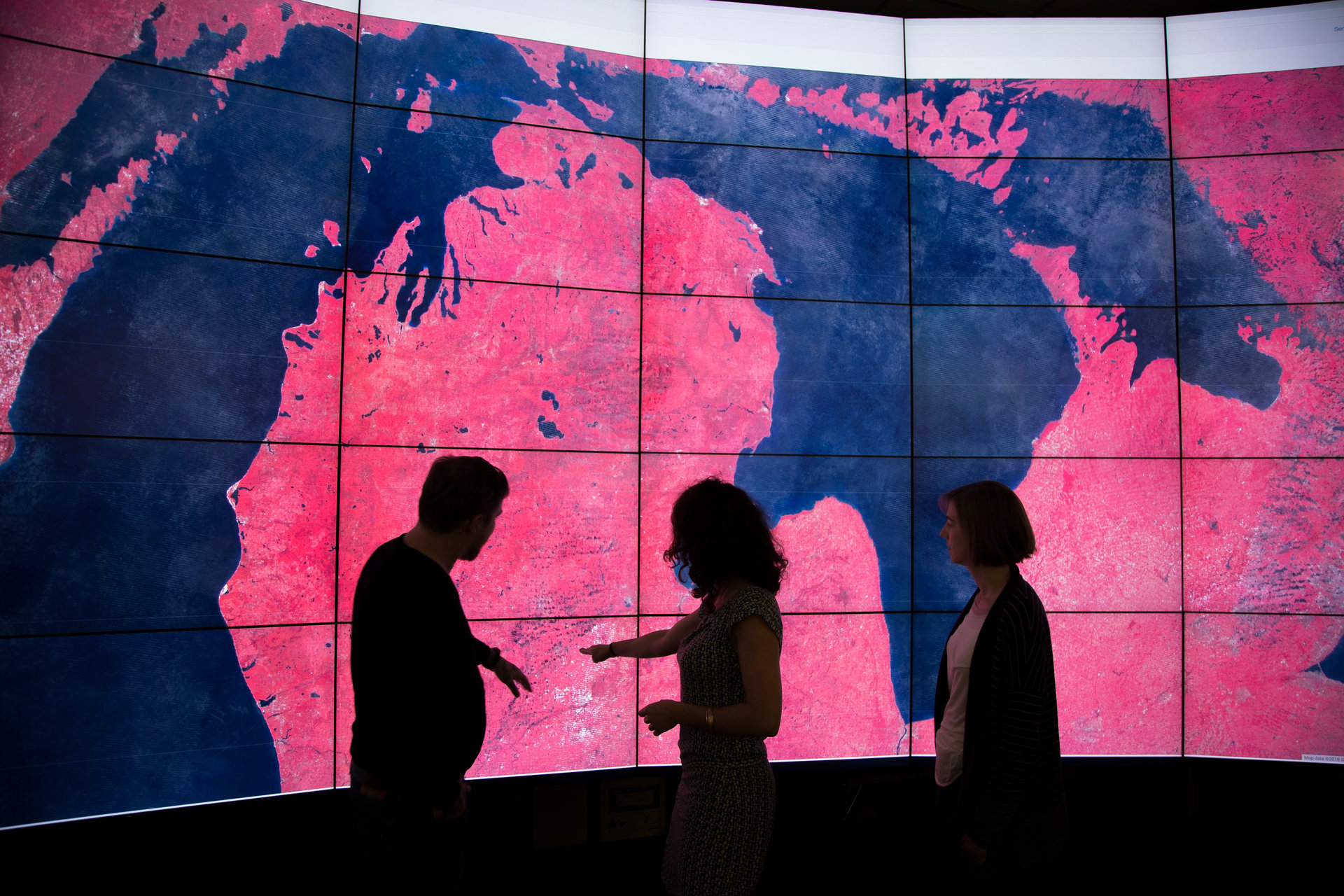Sustainability Accelerator brings people, policy to fast-track real-world solutions
The Sustainability Accelerator drives solutions generated through collaborations and scales them through partners locally and globally to ensure they benefit all people.
A critical piece of the Stanford Doerr School of Sustainability emphasis on impact is a Sustainability Accelerator focused on near-term policy and technology solutions addressing urgent challenges in the world. Now, the accelerator has funded its first cohort of 30 teams whose multidisciplinary projects are intended to advance sustainability solutions through partnerships on local, regional, and global scales.
“A significant challenge in implementing sustainability solutions developed within universities is the issue of scale,” said Arun Majumdar, dean of the Stanford Doerr School of Sustainability, which is launching Sept. 1. “For example, not all technology breakthroughs that work at the academic level will scale up for large-scale impact, due to a variety of downstream risks and barriers including: costs; access to financing; availability of clean feedstock, supply chain, and manufacturing; and policy challenges. The accelerator is intended to help faculty and students understand and ultimately develop innovative approaches to overcome these obstacles for successful implementation.”
The Sustainability Accelerator is one piece of the school’s distinctive three-part structure that also includes rigorous academic departments to generate new knowledge, and institutes to focus interdisciplinary expertise around critical challenges. It is central to the university’s focus on accelerating the application of knowledge to benefit the world. Other Stanford accelerators focus on health, learning, and social problems.
“The normal model for conducting research at Stanford is to get a grant, do the work, and publish papers – that’s the measure of success – and to train graduate students in the process,” said senior research scholar Michael Wara, interim director for policy engagement in the Sustainability Accelerator. “The accelerator is taking a really different model, and we were careful in the selection process to ask applicants to explain how they are already interacting with external stakeholders and how they intend to translate their work outside of the university within the one-year time frame of the grant.”

Topics of the funded grants include clean energy technologies, environmental justice, human health and community well-being, sustainable manufacturing, policy, finance, technology development, biodiversity, and more. About half the funded projects are focused primarily on technology and half on policy or finance.
“The reality is that the sustainability challenge is not going to be solved just by technology – technology is critical, but we also need policy change,” Wara said. “We need to work with policymakers, to co-create questions and produce answers on a time frame that’s generally faster than the academic research time frame.”
The vision for the Sustainability Accelerator has undergone more than two years of development and iterations starting with a committee co-led by Majumdar and Noah Diffenbaugh, professor of Earth system science, followed by a transition workstream co-led by Deborah Sivas, professor at Stanford Law School, and Thomas Jaramillo, associate professor of chemical engineering and of photon science, with input from stakeholders across the university.
Broad areas of impact
The grants were awarded in three tiers: planning, mid-range, and large-scale. The 13 projects funded at the planning tier range from evaporative cooling for data centers and direct capture of carbon dioxide in soils to elastic energy storage and balancing socioeconomic development and conservation. Fourteen were awarded at the mid-range level, and include projects to accelerate environmental justice at Stanford, recover electrochemical nutrients from wastewater, connect prescribed burns with public health outcomes, and develop a Pacific-wide blue food initiative.
Three projects that are the most ready for deployment received large-scale funding: development of commercial-ready enzymes that can degrade plastic pollutants, scaling of geophysical methods to recharge California’s groundwater system, and implementation of a 24/7 carbon-free bus fleet for the Stanford campus.
Bioengineering Professor Jennifer Cochran, who leads the plastics project, aims to advance progress toward industrial-scale biorecycling, enabling a future where biocatalysts are deployed at points of plastic waste generation around the world. Cochran is collaborating with Matteo Cargnello, assistant professor of chemical engineering, and Craig Criddle, professor of civil and environmental engineering. The team is actively engaged with industry partners to engineer biocatalysts that can rapidly break down multiple types of plastic in physically complex and mixed material waste streams.
Cochran, who has spent her career as a molecular engineer developing novel therapeutics for cancer, was compelled to support this new laboratory direction in sustainability by Nikita Khlystov, a bioengineering postdoc who is leading the interdisciplinary work between the three groups.
“The 20th century brought us a revolution in plastics, which transformed our daily lives and provided better healthcare, food, clothing, and consumer goods. Now, in this century we are embarking on a revolution aimed at solving the urgent waste challenges caused by all of this plastic,” Khlystov said.
Cochran added, “In the Bioengineering Department we have spent the past two decades building world-class research programs to tackle biomedical challenges. Now we are embracing opportunities to develop biological tools to ensure both healthy people and a healthy planet.”

Geophysics Professor Rosemary Knight, who leads the groundwater project, is working with Paul Gosselin, deputy director for sustainable groundwater management at the California Department of Water Resources, and Michael Lepech, professor of civil and environmental engineering. Their work involves close collaboration with a host of other partners who have been established over nearly a decade, including water managers, nonprofit leaders, environmental planners, and engineers.
“It became very clear to me that the only way to use geophysics effectively to address these problems was to work with the people who are there on the front lines trying to address this challenge of too little water and too many needs,” Knight said.
The team is working to develop the web-based software and online training needed to use geophysical data to identify pathways for quickly moving water down from the surface to recharge – or replenish – the groundwater system.
“It’s been a very rewarding experience collaborating with real people in the real world with real problems,” Knight said. “It’s caused me to think differently about how we acquire, analyze, and interpret data, and reaffirmed the importance of knowing what questions you’re trying to answer from the moment you start acquiring your data.”
The third large-scale project is led by civil and environmental engineering Associate Professor Ram Rajagopal, along with Marco Pavone, associate professor of aeronautics and astronautics; Nicholas Bambos, professor of electrical engineering and of management science and engineering; Liang Min, managing director of the Bits & Watts Initiative at the Precourt Institute for Energy; Omer Karaduman, assistant professor at the Graduate School of Business; and Gustavo Cezar, staff engineer at the SLAC National Accelerator Laboratory and PhD student in civil and environmental engineering.
The team is working to develop battery storage deployment in order to demonstrate a scalable 24/7 carbon-free solution with the Stanford electrified bus fleet. The project aims to accelerate the whole campus toward a 24/7 carbon-free energy system that can become the first transferable model for bus fleets in school districts, other higher education institutions, corporate campuses, and municipalities.
“The traditional agencies that fund this type of work don’t really fund actual deployments,” Rajagopal said. “This program allows us to experiment on the Stanford campus, and if this works and we’re able to demonstrate positive results, then we believe we can go to other campuses to scale it.”
The group has close connections and existing collaborations with key external partners through the EV50 flagship project, including Pacific Gas and Electric Co., technology and policy organizations, as well as Stanford Sustainability and Energy Management and Stanford Transportation, who will demo the project.
“Our students were a major driver – they basically put everything that we’re doing on pause and jumped into this,” Rajagopal said. “They are so excited to see their research from labs and smaller tests go into a completely real system that is operational.”
Supporting students
In addition to driving solutions, the accelerator provides valuable opportunities for students to learn how to develop, implement, and scale their ideas, according to Wara.
“We want to produce professionals who have had some clinical experience in the sustainability policy space, so that when our engineers go out into the world and form companies, they know something about how the regulatory process works; and when our scientists go into research, they will have a sense for how to make it more policy relevant; and when our lawyers and business students form startups to do innovative climate-focused work, they have a sense for how that’s going to integrate into existing energy and climate policy frameworks,” Wara said.
Part of the training through the accelerator will be carried out by expanding on a model first developed at Stanford Law School, called a Policy Lab, in which a multidisciplinary group of students work collectively to provide cutting-edge analysis for external partners such as policymakers or NGOs.
One example of how the Policy Lab will operate is Wara’s own Smoke (Law 808D) policy lab, a course co-taught with law Professor Deborah Sivas to inform the development of wildfire policy in California and the Western United States. The collaborators, who were awarded a mid-level grant to continue their efforts, work closely with the Karuk Tribe to understand prescribed burns and bring Western wildfire policy toward science-based practices.
Wara is facilitating conversations with students and postdoctoral researchers who want to work with the accelerator, and encourages others to reach out to him with ideas or questions. Wara also intends to host a series of workshops on how to write proposals that demonstrate translational work leading up to the next funding round.
“The passion is coming from students, and my experience has been that collaborations between faculty are often built with students,” Wara said. “Sustainability work is very often multidisciplinary and students are the lifeblood of that.”
Explore More
-
The Stanford Forum on the Science of Energy Transition brought together scientific experts, technology innovators, and industry leaders to explore practical pathways to a decarbonized future.
-
A unique hands-on class teaches Stanford Law School students how to work with early-stage companies that have the potential to move the needle on climate and sustainability.
-
The first group of scholars supported under the new Sustainability Accelerator Fellowship program will focus on the challenge of removing billions of tons of greenhouse gases annually from Earth’s atmosphere by the middle of this century.



